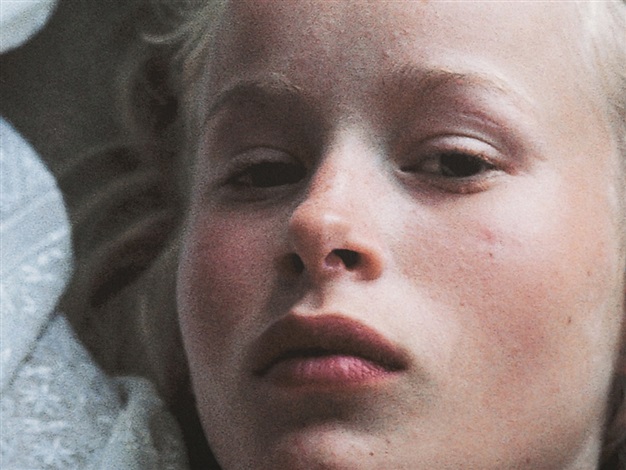Devid Gamiljton Foto

The arts — very much including photography — under the umbrella of expression and free speech can explore the boundaries of what is acceptable. Often these boundaries are harmless and prompt little more than a debate regarding the meta of the relevant discipline.
Nov 26, 2016 - British photographer David Hamilton has died in Paris on Friday night. A photo shoot at a nudist camp in Cap d'Agde, southern France, in the.
Occasionally, however, the debate is darker in nature as the boundary being pushed is one of moral significance. The photographer and director David Hamilton was somewhat of a permanent resident of such debate and his suspected suicide recently has brought a number of questions to fruition. Hamilton worked in the creative industry from 1953 when he moved to Paris and worked as a graphic designer for Elle magazine.
His talent promptly landed him the position of art director at a number of European publications while he concurrently developed a photographic style he would later become famous for. While perhaps scoffed at today, his style of dreamy, soft focus images became popular in the extreme and resulted in millions in sales, many exhibitions, myriad features, and the position of director on several films. It was Hamilton's penchant for young female, and more relevantly, nude, subjects that eclipsed his photographic style in the eyes and minds of many. His work was bombarded with criticism and Hamilton polarized opinion while treading the fine line of 'art or pornography' as he tirelessly pursued his 'obsession with purity' he believed to share with 'Lolita' writer Vladimir Nabokov whom he drew inspiration from. The regular appearance of naked girls, often in their early to mid teens, ignited allegations that his photography was tantamount to child pornography; Few accusations bear as much devastating social impact as this. Magix xtreme photo designer 7 keygen.
Two such accusations that do arguably outweigh child pornography is that of rape and pedophilia, and both of these were alleged of Hamilton in October this year. Image by Olivier Strecker and used under Creative Commons. On October 22, 2016, French radio presenter Flavie Flament named Hamilton as the person who raped her during a photoshoot nearly 30 years prior when Flament was just 13 years old, as detailed in her novel 'La Consolation,' said to be based on true experiences. As is often the case with landmark allegations against a public figure, Flament's words prompted several other models featured in Hamilton's work to step forward with similar claims.
Hamilton immediately defended himself by stating: I have done nothing improper. Clearly the instigator of this media lynching is looking for her 15 minutes of fame, by defaming me in her novel. - David Hamilton This defense continued with Hamilton asserting that he will begin legal proceedings against the accusers, but on November 25, 2016, he was found dead. His death's cause, while unclear, is suspected to be suicide.
Flament issued a statement soon after Hamilton's death reached the media and pulled no punches: I’ve just learned of the death of David Hamilton, the man who raped me when I was 13. The man who raped numerous young girls, some of whom have come forward with courage and emotion these last few weeks. I’m thinking of them, of the injustice that we were trying to fight together. By his cowardice, he has condemned us once more to silence and unable to see him condemned. The horror of this act will never wipe out the horror of our sleepless nights. - Flavie Flament The topic is so fiercely contentious that a calm and reasoned debate is tantamount to impossible. Hamilton's photography of naked children is not singular and similar types of portrait have suffered similar types of criticism; examples of which can be seen in the works of Sally Mann and Jock Sturges, to name a few.
While it is presently fruitless to discuss the rape allegations without a completed legal case, the re-ignited debate of whether this type of photography ought to be accepted is still worth having and it heavily influences the reception and opinions of Hamilton's guilt or innocence. The majority of media outlets discussing these allegations cite cases in which people have been convicted of possessing child pornography in which Hamilton's images have been present. While this does support the general notion that Hamilton's photography is morally wrong, it doesn't speak to the voracity of Flament's claims and ought not to be conflated.
That said, there is a strong sense in which the photographs are above and beyond a boundary worth having. Boundaries and art are terms that appear to repel each other in many regards with a culture within art wanting to 'break' boundaries. When the efforts to do such are urinals in exhibitions the effects are harmless; it is only when the efforts walk the line of illegality that a debate needs to take place. The majority of photographers and artists are against the stifling of expression, but when leniency enables the endangering and exploitation of children, creative freedom must be sacrificed. The enormous gray area that engulfs Hamilton, Mann, and Sturges speaks volumes to the need for constructive discussion. If an amateur photographer were to take similar photographs to these three artists, would the images ever reach print, let alone sell millions of copies?